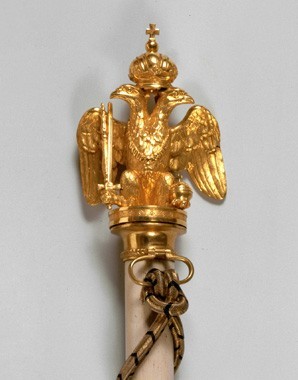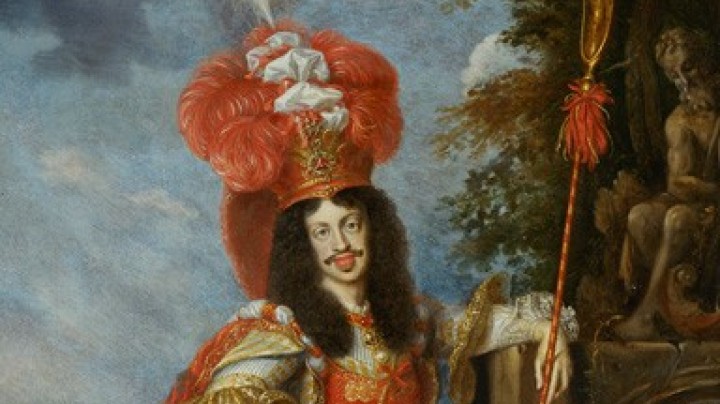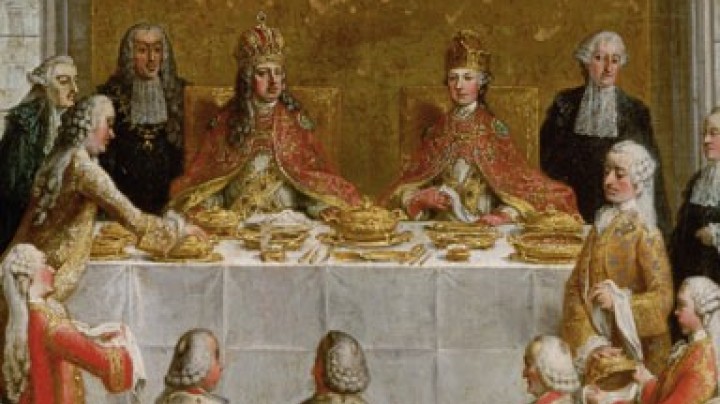A question of honour – receiving the diplomatic corps
Then as now, the polished boards of the diplomatic stage were considered to be particularly slippery. One of the trickiest moments was the initial audience at Court of a newly accredited ambassador. This was an occasion that demanded hair-trigger sensitivity and a profound knowledge of protocol in order to ensure that the envoy, as a representative of a sovereign state, was accorded the appropriate honour while at the same time preserving the dignity of His Imperial Majesty.
Court ceremonial had a precisely regulated sequence of reciprocal demonstrations of respect for this act of state which traditionally took place in the highest-ranking suite of rooms in the Hofburg, the Ceremonial Apartment in the Leopoldinischer Trakt, its magnificent appointments affording a fitting stage for such a ceremony.
The ambassador was collected from his residence by an imperial chamberlain in a state coach drawn by six horses. As a token of special honour, the coach was permitted to drive right into the Schweizerhof, the innermost courtyard of the palace. Via the Ambassadors’ Staircase, named after this ceremony, the high-ranking visitor was escorted through a lane of honour formed by the imperial lifeguards into the first room, known as the Trabantenstube (after the Trabanten Lifeguards). Two imperial Kammerdiener (valet-de-chambres) then led the ambassador into the First Antecamera, where the Oberstzeremonienmeister or Grand Master of Ceremonies was waiting. The latter then led the ambassador through further rooms, each increasing in importance, until they reached the Geheime Ratstube (Privy Council Room). Here the Oberstkämmerer or Grand Chamberlain, who traditionally controlled access to the private sphere of the monarch, advanced to exactly midway across the room to receive the visitor. After an exchange of formal greetings the Oberstkämmerer proceeded alone to the next and highest-ranking room, the Audience Chamber, where the emperor was waiting, to announce the arrival of the ambassador.
At a signal, an imperial Kammerdiener now opened both wings of the double door and the ambassador advanced to meet the emperor, bowing three times. Now followed the climax of the audience, when the letter of credence was handed over to the emperor. Whether the emperor or merely the Oberstkämmerer received this document personally was an eloquent expression of the degree of trust entertained towards the state represented by the ambassador.
After this, the rest of the corps was presented to the emperor. The ambassador retreated backwards to the door (it being strictly forbidden to turn one’s back to the emperor), and knocked, whereupon – note the subtle difference – only one wing of the door was opened to admit the embassy staff.
The audience concluded with the legation making three deep bows in front of the emperor. Then the ambassador and his entourage left the Audience Chamber in the reverse order of arrival and were escorted by the same dignitaries from room to room back to the coach.















